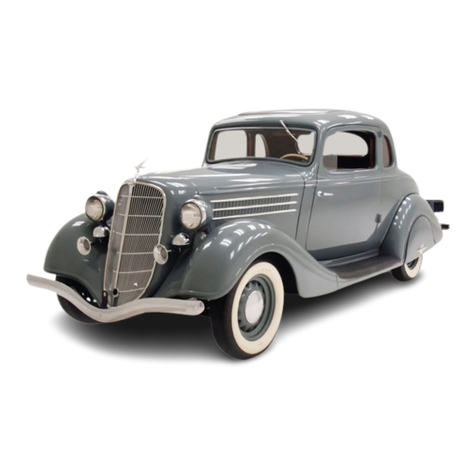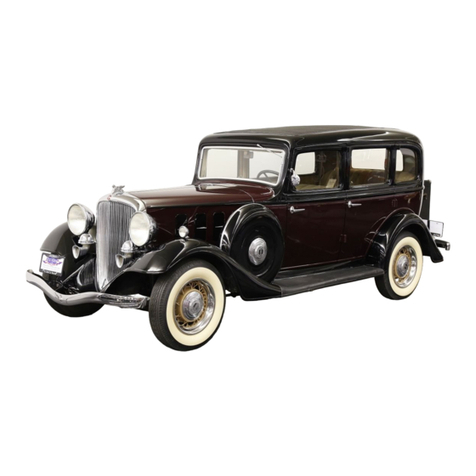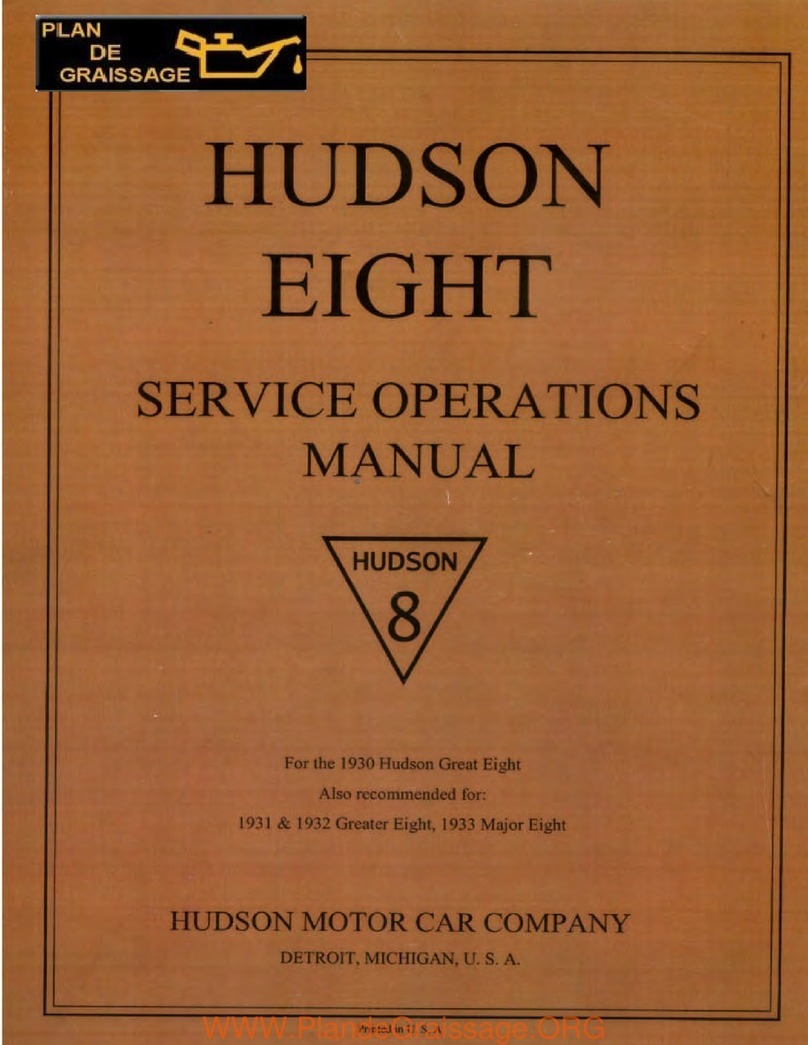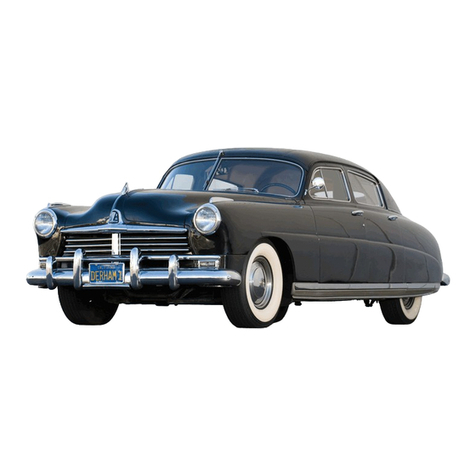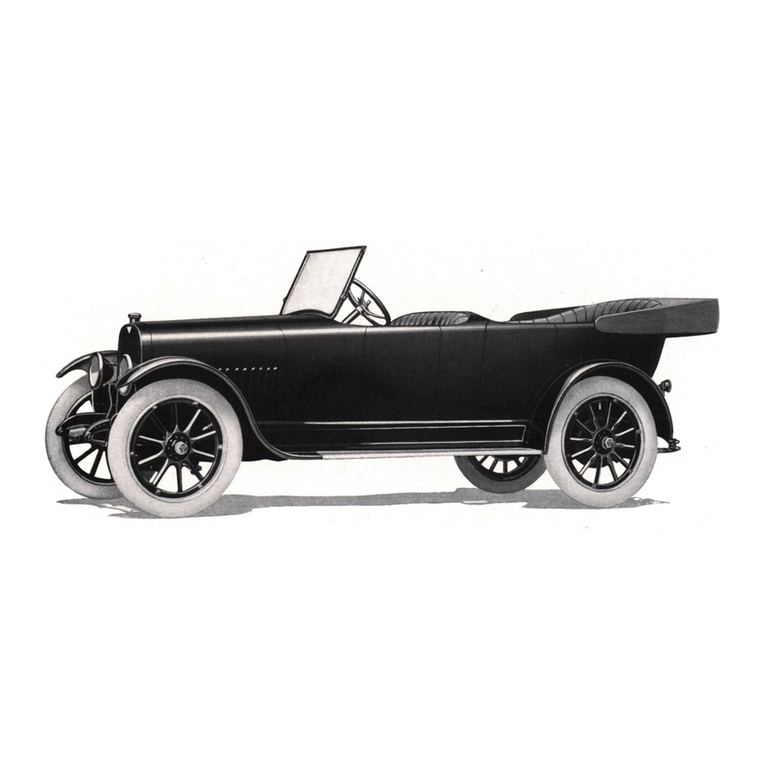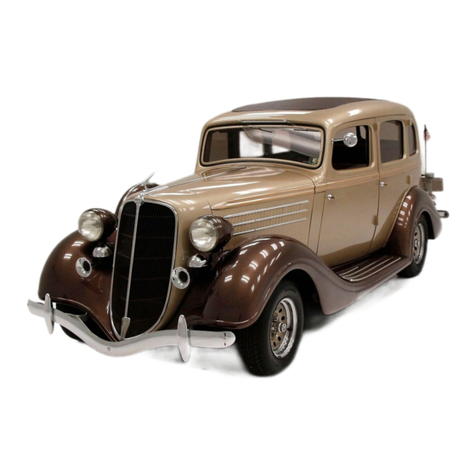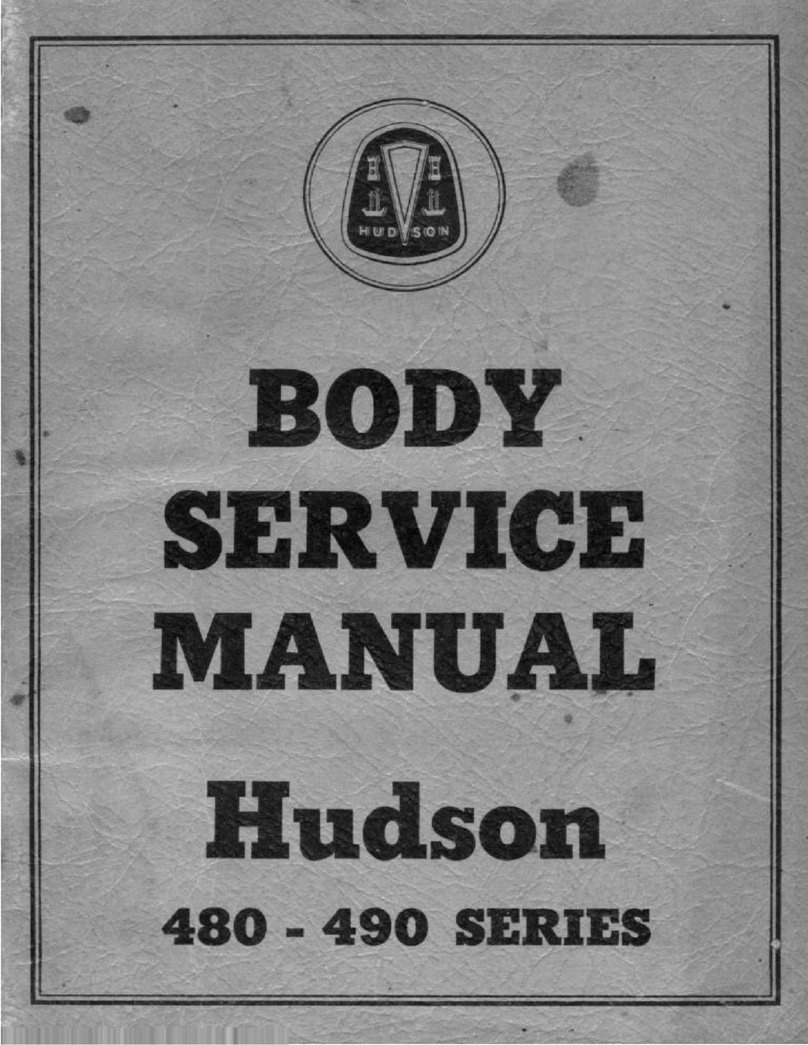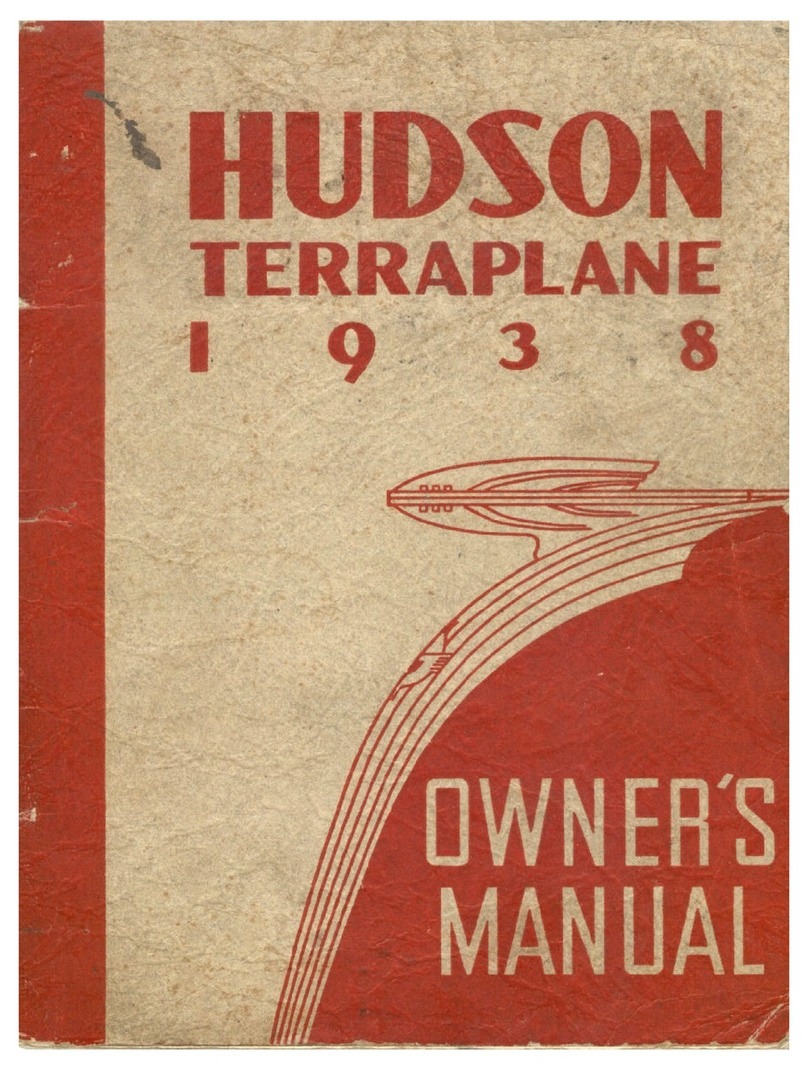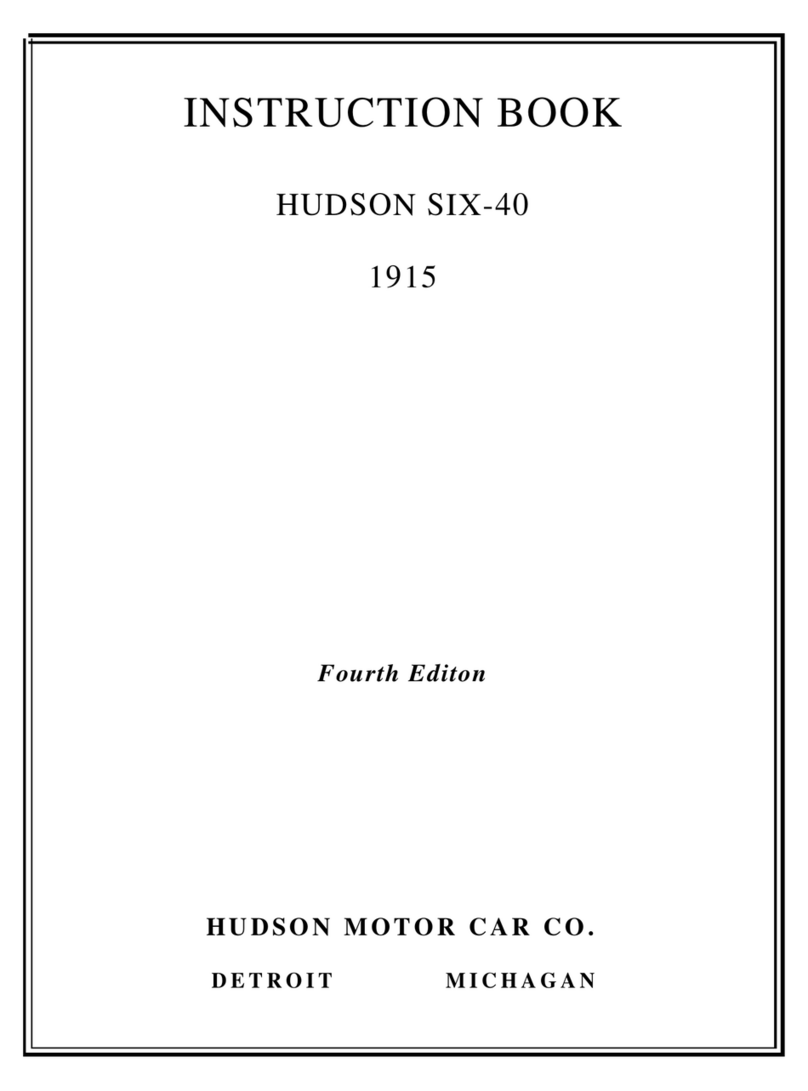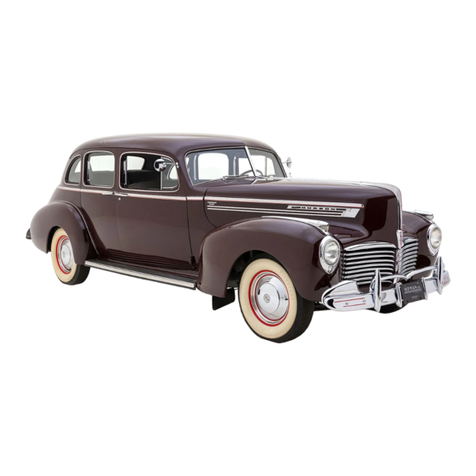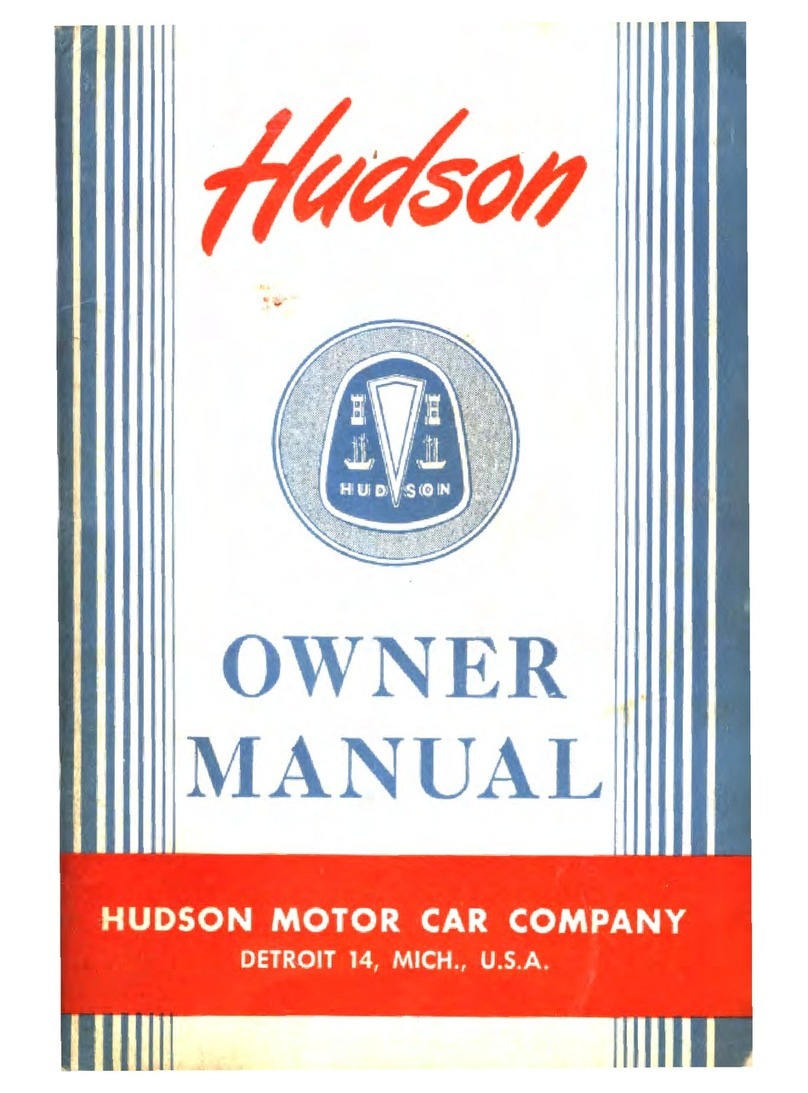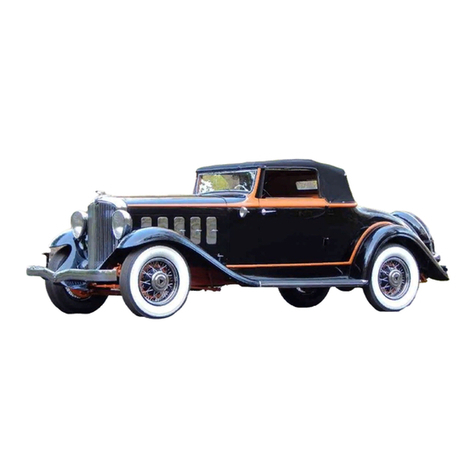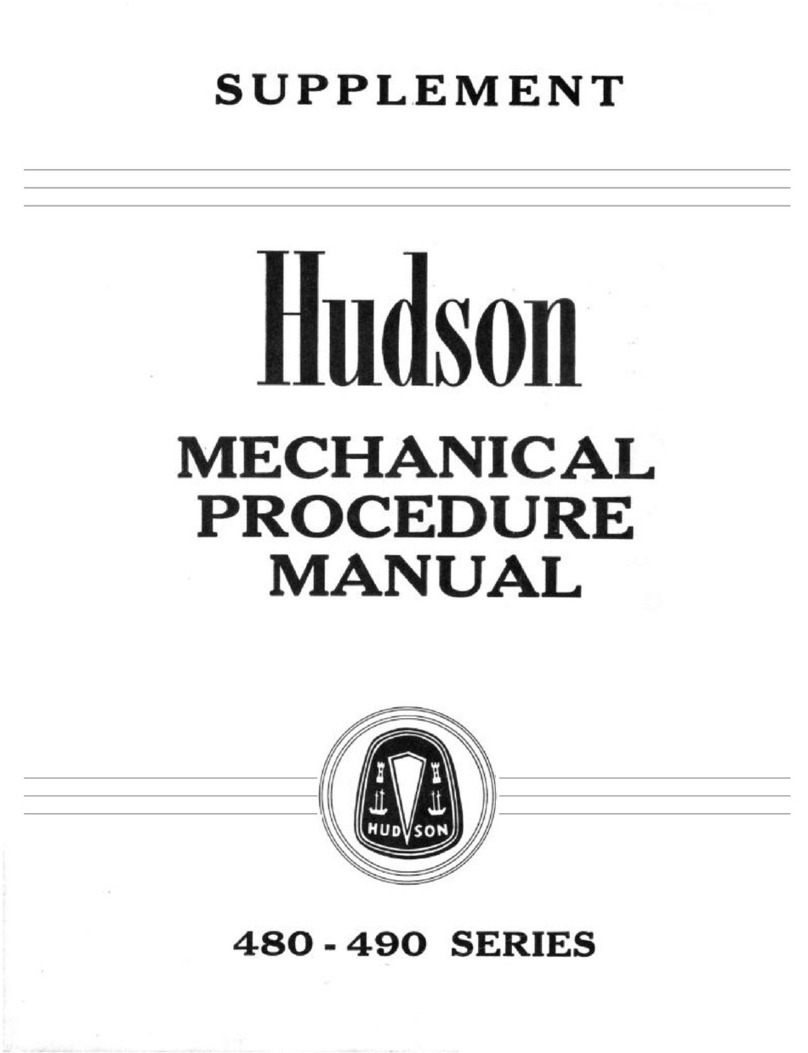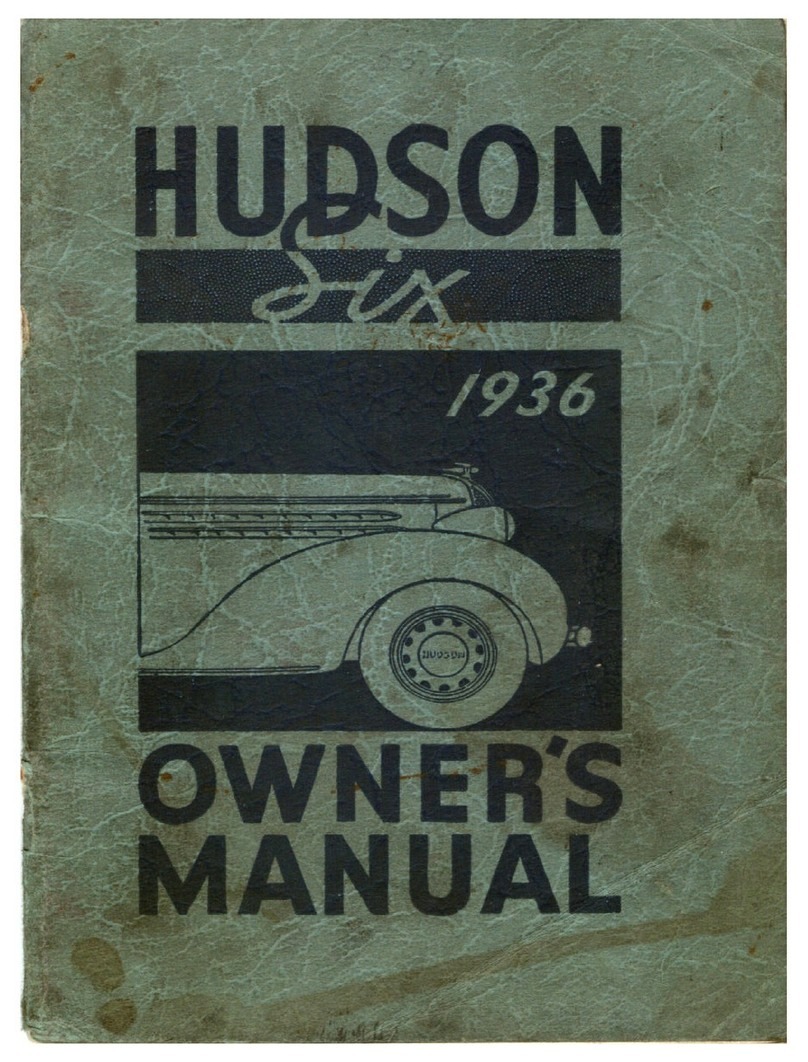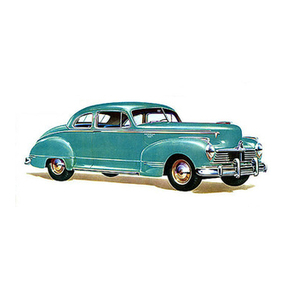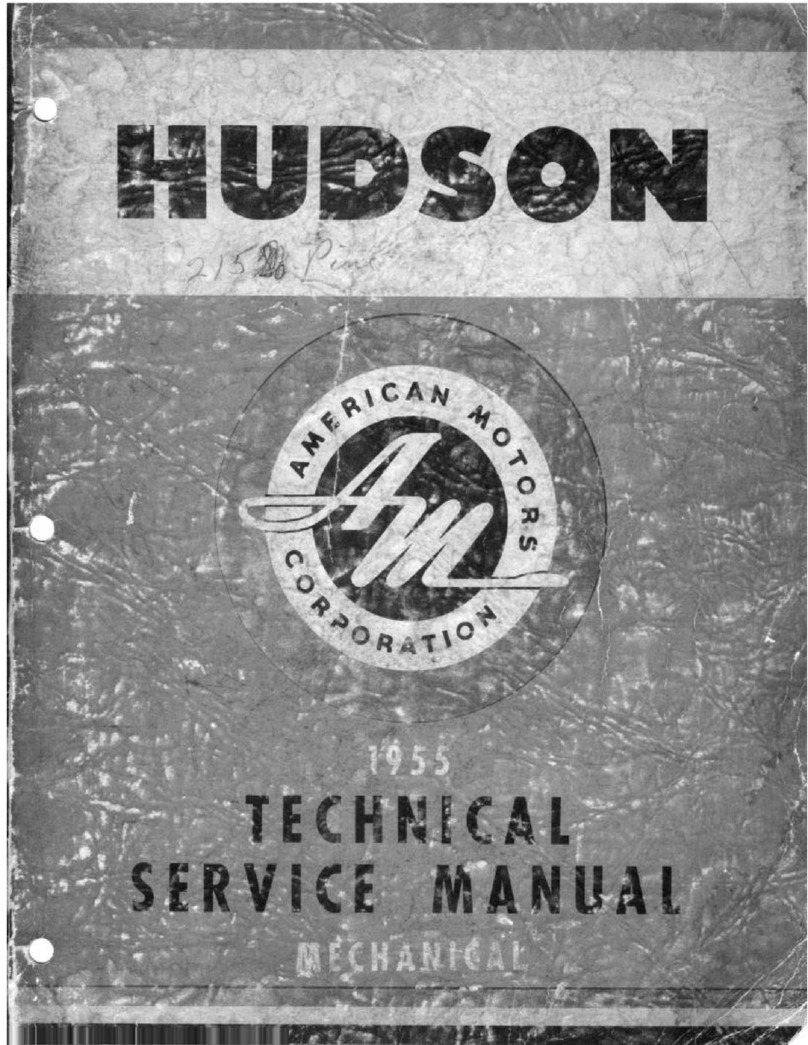
6 H U D
SO
N E
IGH
T
Camshaft Drive
...............................................
G
e.
tr
Connecting Rod Lower Bcarin~ Clearance
.....
001";
End Play, .006" .lH "
Piston Material
................................
Lo Ex Aluminum Alloy
Piston
Type
.....................................
T Slot Cam
Groun<l
P1·ton Weight, Ounces
.........................................
10.7-i
Skirt Clearance
...............................................
001"
Number
Piston Rings
.....................
Compression, 2;
011
Control. 2
Width
of
Piston Rings
............
Compression, 3/
32";
Oil Control. ; 16"
Piston
Ring
Gap
.........................................
009" .011"
Lubrication System
..........................
Hudson
Duo
-
flo
Autom.
1t1c
Oil Pump Type
....................................
Osc11lating Plun~cr
Oil Reservoir Capacity
......................................
7 Quart~
Capacity
of
Lubncat1on System
...............................
9 Qu,1rt:,
Coo
ling System
Type
..............................................
Pump Circulat
io
n
Radiator
Type
.......................................
Ribbon Cellular
Cooling System Capacity
..................................
5
~
Gallons
Fan Belt
................................................
"V"
Typ
e
Fu
el Sys
tem
Carburetor
.......
.
..........
Make.
Carter;
Type,
Down
Draft;
1:c,
1'
.
4''
Choke Control
...........................................
Automat1c
H
eat
Control
............................................
Automatic
Fuel Delivery
................................................
Pump
Air
Cleaner
......................................
Intake Silencer Type
G,tsoline
Tank
Capacity
..................................
1'i
Yz
Gallo
n-.
Starting and Ig
niti
on
Make
.....................................................
Autolite
Spark Control
............................................
Automatic
Timing
...............................................
Dead Center
Firing
Order
.........................................
l-
6-2
-5-8-3-7•4
Distributor
Gap
. . . . . . . . . . . . . . . . . . . . . . . . . . . . . . . . . . . . . . . . . . . . . .020"
park Plug Type
.........................................
J-7- Mctn~
Spark Plug Size
................
.
............................
14
Mm.
Spark Plug
Gap
...............................................
025"
Generator Regulation
.................
Third
Brush and Voltage Regulator
Generator Charging Rate
.................
Cold, 22 Amps.; Hot,
17
A
mps.

